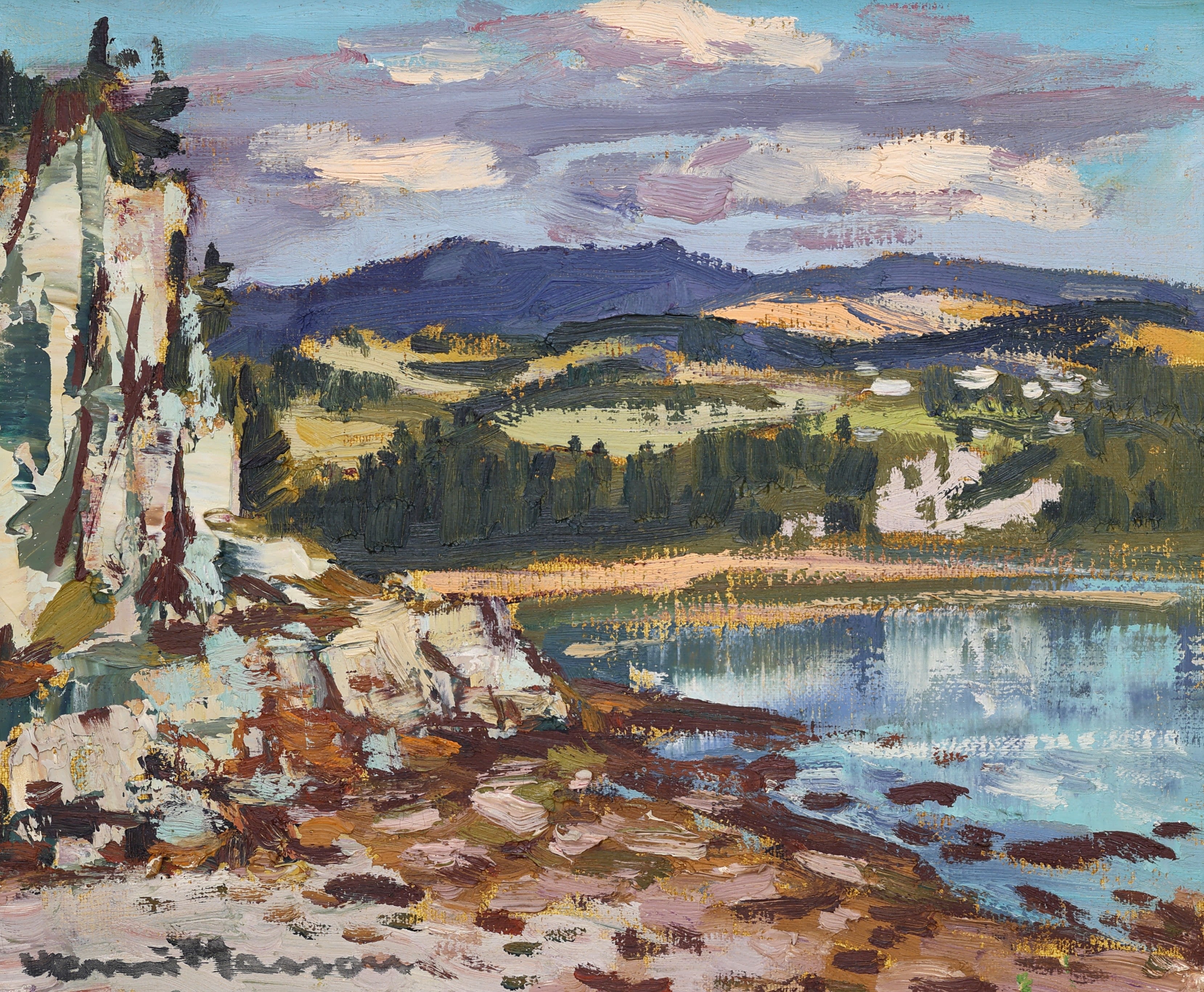Masson’s “best works are full of detail and movement, with a broad range of colour, and convey a sense of immediacy to the viewer.”
Kathleen Laverty, 2008
Henri Masson (January 10, 1907 - February 9, 1996) was born in Namur, Belgium, and his early years were spent as an apprenticeship in a metal engraving shop. Developing his skills as a master engraver contributed to his understanding of intricate details and craftsmanship, which would later influence his art..
 Henri Masson; End of Winter, Masham. Quebec
Henri Masson; End of Winter, Masham. Quebec
In 1921, Masson made a significant move by immigrating to Ottawa, Canada. where he attended the Ottawa Art Association and studied under George Rowles, then attended the Ottawa Art Club. One of the pivotal moments in his artistic development was his discovery of the Group of Seven's work at the National Gallery of Canada. The Group of Seven's unique approach to capturing the Canadian landscape resonated with him and became a source of inspiration.

Henri Masson; St-Sixte, QC
Masson took courses in art glass and this helped him develop a colourful and distinctive style of painting. He became known for musical settings, still life, scenes of everyday life and depictions of Quebec villages. His commitment to art was unwavering, and in 1945, he made the transition to becoming a full-time painter.

Henri Masson; Pointe Frégate, Gaspésie
Henri Masson worked in oil, watercolour, charcoal, casein, red chalk, ink, and pastel. During his career he travelled to England, Greece, Russia, Belgium, France, Italy, Spain and Mexico.
Masson's artistic talent was recognized on an international scale when one of his paintings was reproduced by UNICEF. Additionally, he had the honour of having one of his paintings featured on an 8-cent Canadian postage stamp.

Henri Masson; Murray Bay
Henri Masson’s work has been exhibited in major galleries and museums in Canada and around the world. His work was shown at the New York World’s Fair in 1939, the Sao Paolo Biennale in 1951 and the Quebec Pavilion in Osaka, Japan in 1970. Today, Masson is recognized as one of Canada's most important modernist painters.
Memberships: RCA, OSA, CGP, CSGA, CSPWC, FCA
Exhibitions: New York World’s Fair (1939), Sao Paolo Biennale (1951) Quebec Pavilion,
Osaka, Japan (1970), RCA (1935-40), AAM (1934, 1935, 1940), work is in collections at AEAC, AGO, EAG, HAG, MQ, NGC, VAG, WAG










